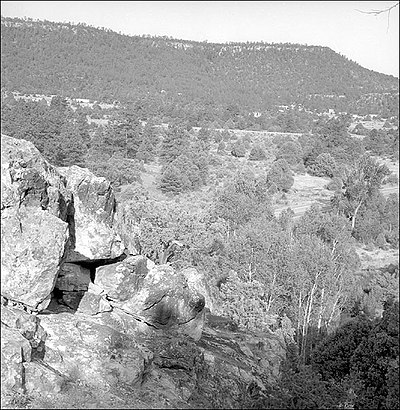 |
| Glorieta Pass |
Both sides set out to attack on the morning of March 28th. Slough, the Federal commander, sent out a force to hit the Confederate flank. Unexpectedly, the Confederates attacked at 11:00 am, and after holding their ground for an hour the Federals fell back to another position strengthened by artillery posted on a hill. Scurry attacked all along the line, and the attacks held off by the Federals, and fierce fighting occurred along the line. Finally at 3:00 pm the Confederates successfully got around the Union right flank, and from what was later known as Sharpshooters Ridge, shot down the Federal cannoneers and soldiers. Their flank having been turned, the Federals fell back again, and were driven from a new position as the Confederates continued to press them. By the end of the day the Confederates remained in control of the field.
However, the Federal flanking party which Slough had sent out early in the day had happened upon the Confederate supplies. They burned the wagons and disabled the cannon, and returned to the main Federal force. So although the Confederates remained in control of the field and were the nominal victors, the destruction of their supplies meant that they could not advance further through the barren country. The Confederates fell back to Santa Fe, and eventually all the way to Texas. All of Sibley's grand plans for the capture of the American west fell apart for the simple lack of supplies. Never again would the Confederates seriously threaten New Mexico Territory.




0 comments:
Post a Comment